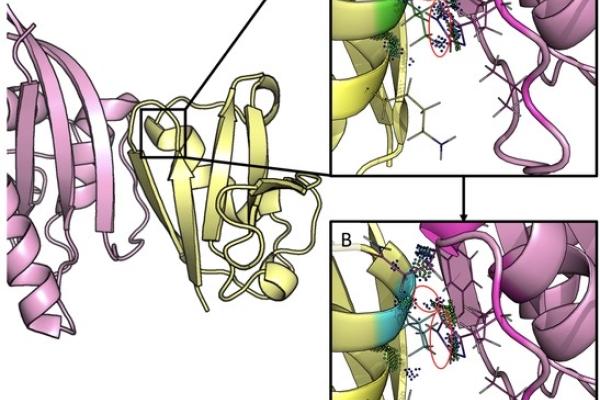
With about an eight percent survival rate in the first five years, pancreatic cancer is one of the deadliest cancers humans face. It can take up to five years before the cancer metastasizes and is even detected. If healthcare professionals could detect pancreatic cancer – and other cancers – earlier, it may be possible to stop the spread and better treat the cancer. James B. Duke Distinguished Professor of Computer Science Bruce Donald is taking a possible first step to do just that.
The Donald lab specializes in designing proteins that will bind to other proteins and enzymes; they can also control how tightly the proteins bind to other proteins and enzymes. Using OSPREY (Open Source Protein Redesign for You), a software suite the lab developed, they can use algorithmic modules to design these proteins.
Pancreatic cancer, though, is tough. The first mutations often occur in the KRAS gene, a gene that makes a protein called K-Ras, which is involved in cell signaling pathways that control cell growth, cell maturation, and cell death. When mutations occur, the K-Ras protein can become overactivated and grow uncontrollably. K-Ras binds to c-RAF, a historically undruggable protein that’s implicated in difficult-to-treat cancers like pancreatic cancer. Blocking the Ras:RAF protein interaction would be a potential therapy to stop cancer signaling.
The team needed better and faster algorithms to use in OSPREY to be able to design a protein that will bind to K-Ras more tightly than c-Raf. They tested their new algorithms previously published data. “We tested the algorithms with out-of-box settings,” Donald said, “and we used retrospective data to show that we predicted those mutations well.” Then they built a piece of the RAF protein, and redesigned the protein to protein interface to make it bind more tightly. Their results were published in Plos Computational Biology on June 8.
They wanted to design something that could be used in a small lab, so instead of having to look at thousands of proteins, the algorithms they created allowed them to quickly narrow down their search to seven. Of those seven, one looked very promising, and upon investigation, they found it could bind to K-Ras 36 times stronger.
This is just the first step, but it could help define how a drug can be made. Based on this insight they hope to be able to design small, more drug like constructs. “Not only is this a step to how a drug might be designed,” Donald said, “but also, we gained important insights on how to make algorithms faster and accurate enough to do this kind of investigation.”